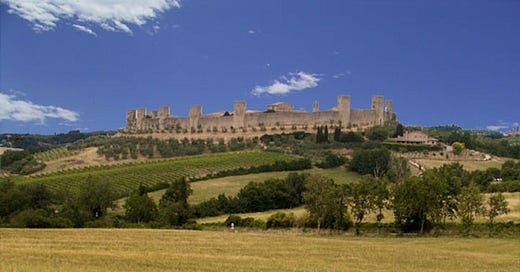To understand the ongoing transformations in the international system, it is useful to adopt the global configuration of power as a central interpretative key. Political power is not distributed in a stable or permanent way, but reorganizes itself over time according to different patterns. It can expand or contract—like an accordion. In certain historical phases, power tends to concentrate in centralized structures, capable of ensuring order, predictability, and security across vast areas. In other moments, however, the center loses strength, and a polycentric configuration emerges in which the ability to provide public goods—security above all—becomes fragmented across multiple levels, actors, and territories. The current historical phase appears to fall into this latter category. The United States, which for decades has acted as the central power and global provider of security, is increasingly hesitant to maintain this role. This uncertainty pushes regional, sub-state, and private actors to equip themselves with their own tools for defending their interests—much like what occurred after the decline of the Roman Empire, when citizens and local communities had to provide for their own protection. In such a scenario, one can no longer speak of a unified international order, but rather of a plurality of overlapping and coexisting orders.
The idea of a “new Middle Ages” thus refers to a transformation of the political and social order, not to a return to disorder. It points to the progressive reduction in the effective reach of sovereignty, the waning of the United States’ central role as global organizer, and the growing inability of multilateral institutions to guarantee public goods at the global level. In this context, the protection of communities and infrastructures increasingly falls to local actors who define their own boundaries—physical or digital—in order to establish autonomous defense mechanisms. In a world marked by instability, uncertainty, and the absence of supranational guarantees, new strategies emerge based on proximity, self-organization, and localized threat management. The resulting framework is fragmented, but not irrational.
In the historical Middle Ages, the disappearance of imperial protection led to a reorganization of power on a local basis. Communities withdrew from exposed plains and resettled on fortified hills; castles were built, city walls erected, militias formed, and municipal self-government took shape. The process of “incastellamento” and urban fortification was a functional response to the absence of systemic protection. What is noteworthy here is that security needs were so compelling they quite literally “moved stones”: people abandoned less defensible settlements—which had been safe under centralized protection—and relocated to more easily defensible terrain.
It is important to note that this process is reversible. When a central authority is capable of guaranteeing security even in the plains and across large territories, populations tend to leave their isolated hilltop settlements and return to more open and accessible areas. In this way, security needs directly shape the geography of urban spaces and human settlements. This is a cyclical dynamic—not deterministic—that reappears over time depending on how political power is distributed.
In the history of the ancient Mediterranean, the relationship between settlement, security, and topography was a structural and recurring pattern. Greek colonies founded between the 8th and 6th centuries BCE—from Massalia (modern Marseille) to Neapolis (Naples)—were often built on rocky promontories or coastal heights, selected for their natural defensibility, strategic maritime control, and logistical autonomy. Similarly, Etruscan cities were built on tuff plateaus surrounded by steep cliffs—Tarquinia, Vulci, Orvieto (ancient Velzna), and Veii are all examples—occupying sites that offered strategic defense against raids and sieges.
This preference for naturally defensible locations was often accompanied by forms of inter-city cooperation. The so-called Etruscan Dodecapolis held joint assemblies at the federal sanctuary of Fanum Voltumnae near Volsinii. Comparable structures existed in the Greek world as well, such as the Delian League led by Athens, which federated allied poleis around shared objectives of defense against the Persian threat. These examples illustrate how, in the absence of a stable central power, security was pursued through a combination of strategic geographical positioning and political-military cooperation among autonomous units—anticipating logics that are re-emerging in today’s global reconfiguration.
This dynamic is now evident in the growing regionalization of defense policies and in the fragmentation of security strategies. As doubts rise regarding the United States’ willingness to maintain its role as global security guarantor, macro-regions such as the European Union are beginning to develop autonomous defense and deterrence capabilities. Much like the medieval communes that organized themselves in response to the collapse of imperial protection, today’s regional actors are preparing to confront threats independently—albeit on much larger territorial scales. Security is no longer ensured by a single, globally recognized authority, but rather constructed through networks of actors that develop their own systems of forecasting, protection, and intervention. As a result, global security governance is increasingly polycentric and unequal, with the retreat of central authority making way for a plurality of regional orders—each with its own priorities, structures, and levels of effectiveness. The unified global order gives way to a fluid constellation of evolving regional arrangements.
This scenario, however, should not be viewed solely in negative terms. The historical Middle Ages were also a period of institutional, cultural, and economic innovation. The rise of universities, customary law, professional guilds, Gothic architecture, and scholastic philosophy testify to the capacity of medieval societies to generate order even in the absence of centralized power. Similarly, the new Middle Ages may offer opportunities for institutional experimentation, for cooperative networks built on interdependence, and for new forms of legitimacy based on effectiveness rather than hierarchy. The core question is not whether we are returning to disorder, but whether we are capable of constructing sustainable forms of security and cohesion in a polycentric world where power is no longer concentrated but distributed.




